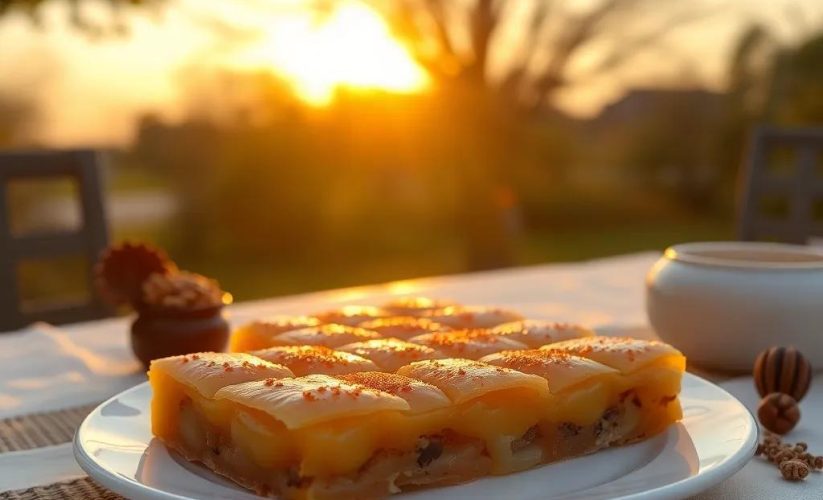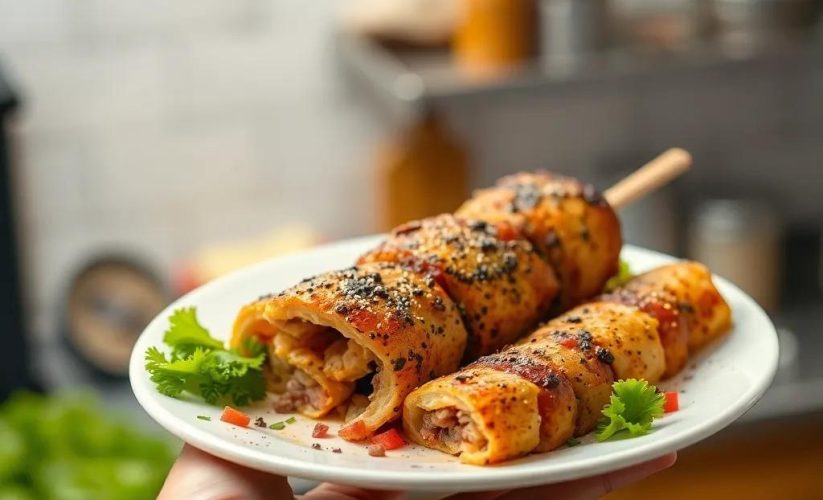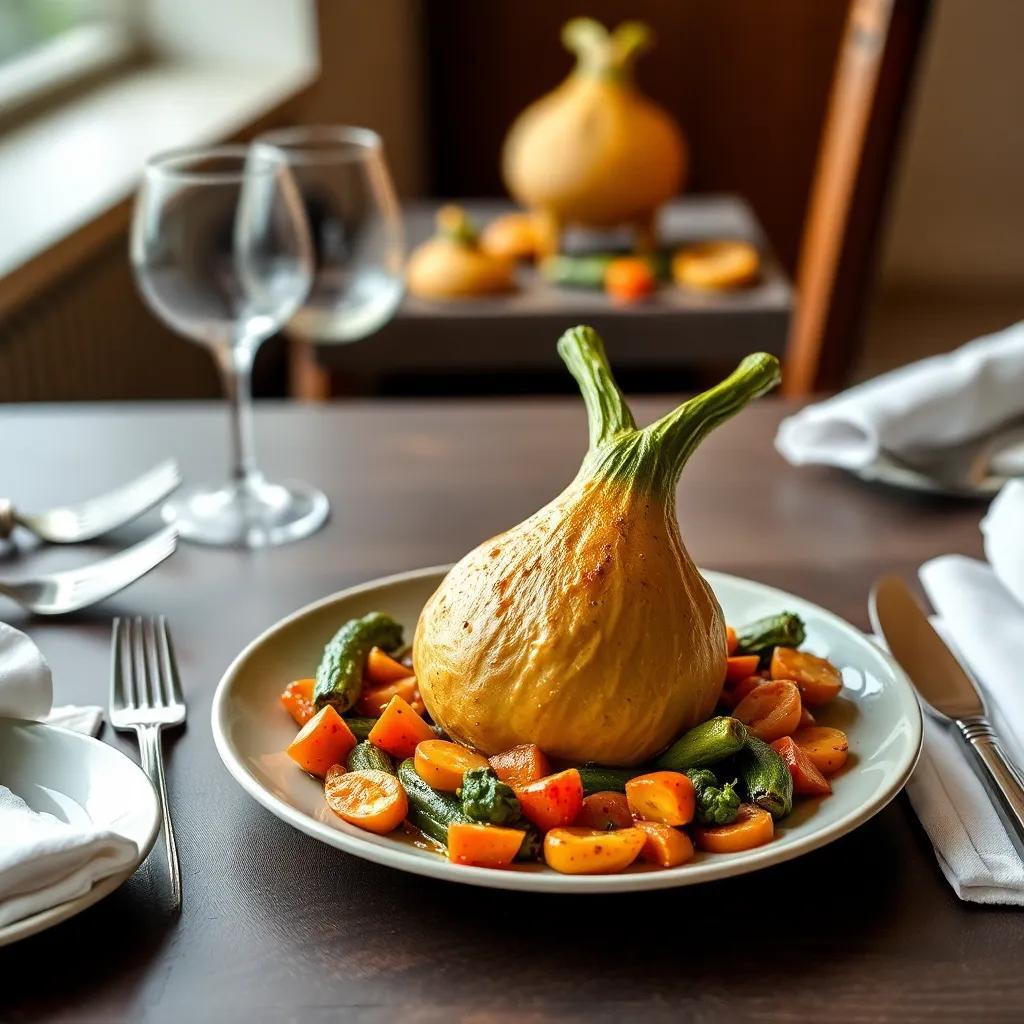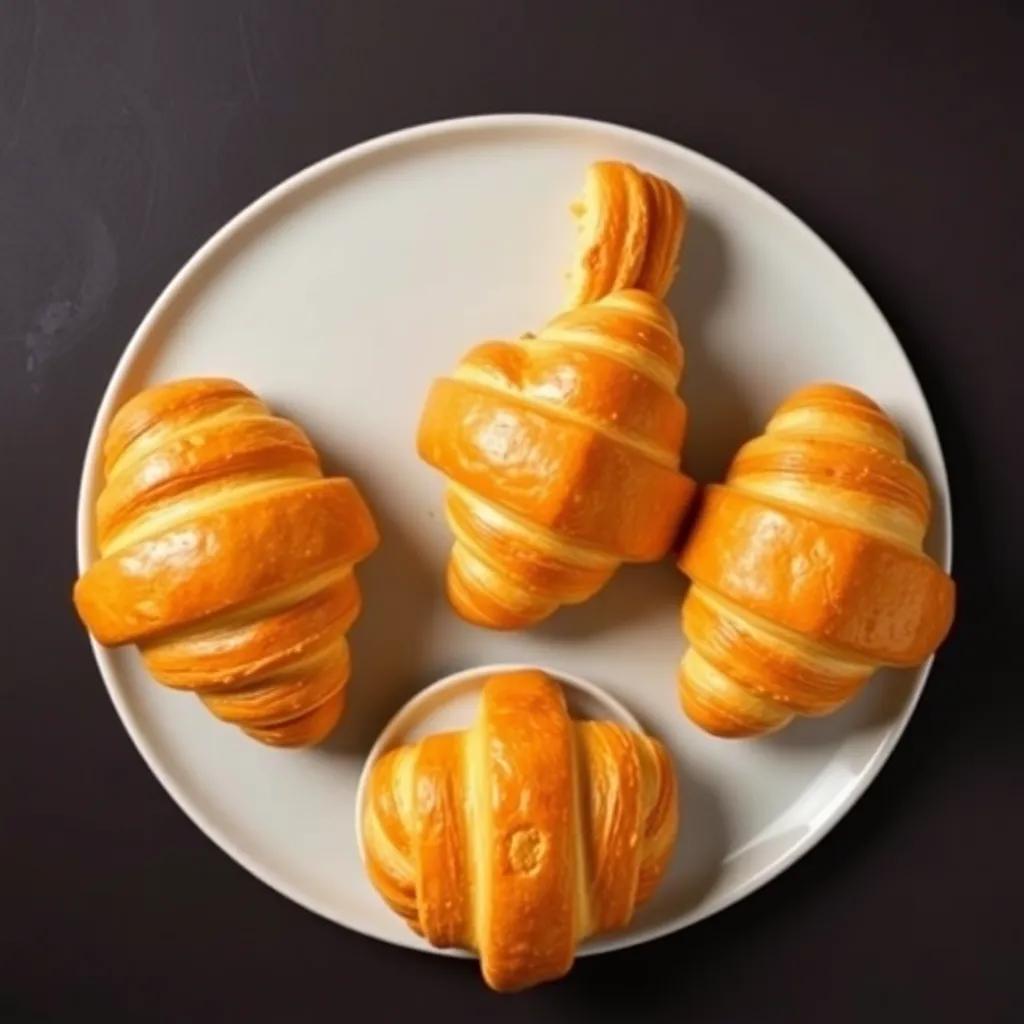Master the Classic Crème Brûlée: Easy, Creamy, Irresistible Recipe
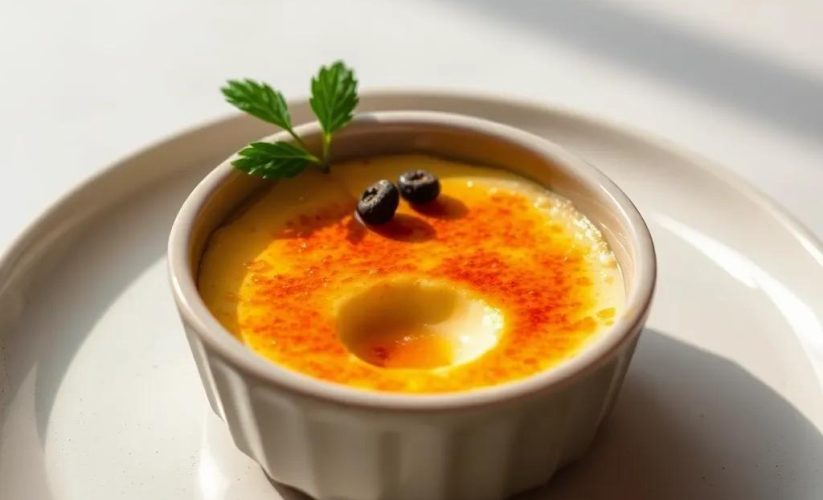
Master the Classic Crème Brûlée: Easy, Creamy, Irresistible Recipe
🌍 Cuisine: French
⚙️ Difficulty: Medium
Ingredients
Nutrition Facts
350
Instructions
- Preheat your oven to 325°F (160°C). Arrange six 6-ounce ramekins in a large baking dish.
- Pour the heavy cream into a medium saucepan. Split the vanilla bean lengthwise and scrape out the seeds. Add both seeds and pod to the cream (if using vanilla extract, add it later). Heat over medium heat until just simmering. Remove from heat and let steep for 10 minutes, then remove the vanilla pod.
- In a mixing bowl, whisk together egg yolks, granulated sugar, and a pinch of salt until the mixture is smooth and pale.
- Slowly pour the warm cream into the egg yolk mixture, whisking constantly to prevent curdling. If using vanilla extract, stir it in now.
- Strain the mixture through a fine-mesh sieve into a large bowl or jug to ensure a silky custard free of any cooked egg bits.
- Divide the custard evenly among the ramekins.
- Carefully pour hot water into the baking dish around the ramekins until the water reaches halfway up their sides, creating a water bath.
- Bake in the preheated oven for 40–45 minutes, until the custards are set but still slightly jiggly in the center.
- Remove ramekins from water bath and let cool to room temperature. Then refrigerate for at least 2 hours, preferably overnight.
- Before serving, sprinkle about 1 teaspoon of granulated sugar evenly over each custard.
- Using a kitchen torch, caramelize the sugar by moving the flame evenly across the surface until golden and crisp. Alternatively, place under a hot broiler to caramelize.
- Allow the sugar to harden for a minute. Serve immediately and enjoy the contrast of creamy custard and crisp caramel top.
Serving Suggestions
- Serve with fresh berries like raspberries or strawberries for a fruity contrast.
- Accompany with a dollop of whipped cream for extra indulgence.
- Pair with a light dessert wine such as Sauternes or Moscato.
- Sprinkle with a pinch of cinnamon or grated orange zest before caramelizing for subtle flavor twists.
- Serve chilled with shortbread cookies or biscotti on the side.
- Garnish with a sprig of fresh mint for a pop of color and aroma.
- Try infusing the cream with coffee or lavender for a unique variation.
Table of Contents
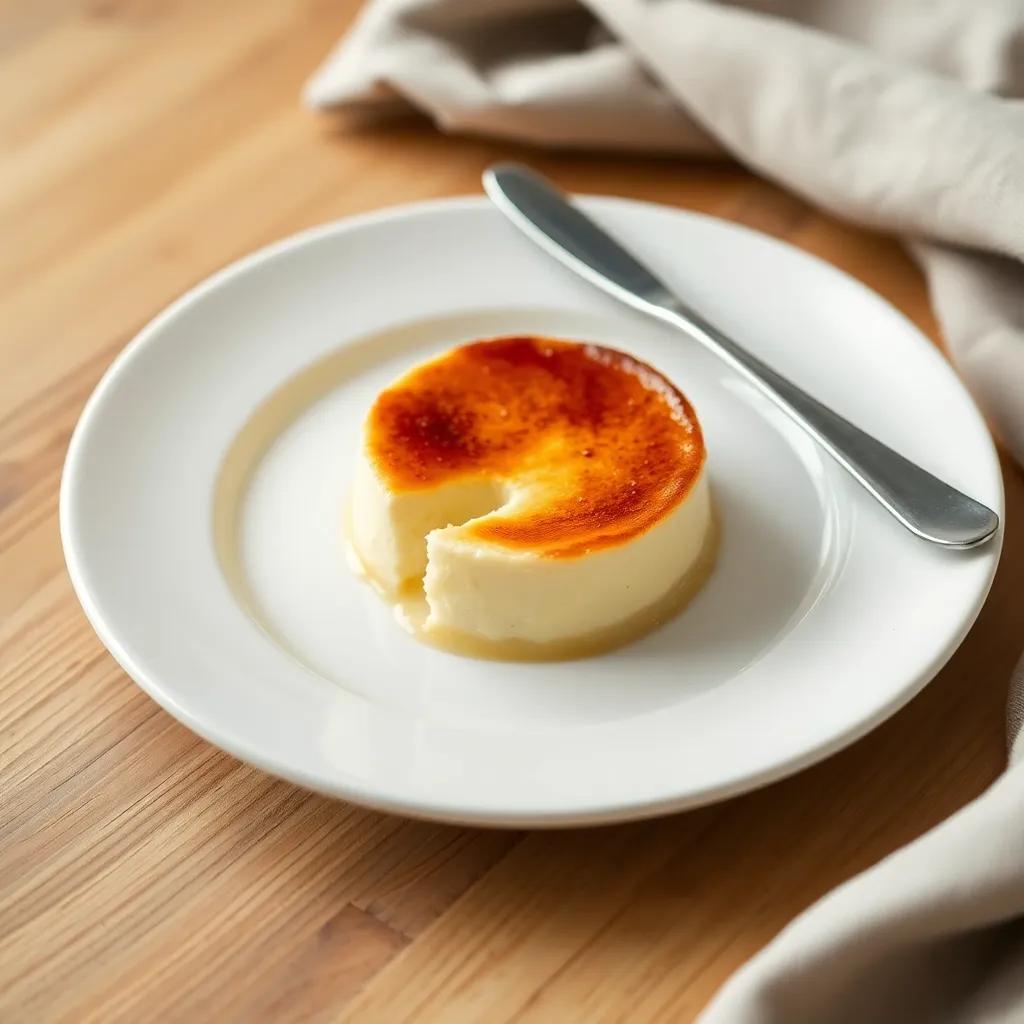
Intro
Crème brûlée is one of those timeless desserts that effortlessly combines elegance with comfort, making it a true crowd-pleaser at any gathering. This recipe invites you to dive into the art of creating a luscious, creamy custard topped with a perfectly caramelized, crackling sugar crust—a delightful contrast that charms both the eyes and the palate. Whether you’re aiming to impress guests at a dinner party, looking for a romantic finale to a special meal, or simply craving a sweet treat to indulge in at home, this classic dessert strikes the perfect balance between sophistication and simplicity.
What makes this rendition especially exciting is how approachable it is without sacrificing richness or depth of flavor. With straightforward techniques and familiar kitchen tools, you can achieve that signature silky texture and crisp topping that often feels reserved for gourmet restaurants. Plus, its make-ahead nature means you can prepare it in advance, freeing you up to enjoy the occasion without a last-minute rush.
This crème brûlée is versatile, offering a moment of indulgence any time of year—cool and refreshing in the summer, yet wonderfully cozy during colder months. It’s also an invitation to savor the ritual of caramelizing sugar right before serving, adding a touch of theater to your dessert experience. Whether shared with loved ones or savored quietly on your own, mastering this classic opens the door to countless delightful moments in your kitchen.
Ingredient Notes
When it comes to mastering crème brûlée, a handful of key ingredients take center stage, shaping both flavor and texture. Understanding these essentials can elevate your dessert from simply good to truly spectacular.
Heavy Cream
The richness and smoothness of the custard hinge on using high-quality heavy cream. Opt for cream with at least 36% fat content to achieve that signature silky mouthfeel and luxurious texture. Lower-fat substitutes like half-and-half or milk won’t provide the same fullness or stability during baking, potentially resulting in a thinner custard. For the best results, choose fresh cream from a reputable source, ideally without additives or stabilizers.
Vanilla Bean versus Vanilla Extract
While vanilla extract offers convenience, the humble vanilla bean is the secret to creating an authentic crème brûlée bursting with floral, aromatic depth. When you split and scrape the seeds from the pod, those tiny black specks infuse the cream with natural, complex vanilla flavor and a beautiful flecked appearance. If fresh vanilla beans are unavailable, pure vanilla extract is a fine substitute—just use a good-quality option and add it after the cream is heated to prevent flavor loss. For an adventurous twist, try variations like Tahitian vanilla beans, which impart a fruitier and more floral profile, or infusions like lavender or coffee for subtle undertones.
Egg Yolks
Egg yolks are the custard’s backbone, providing richness, color, and structure. Using fresh, large egg yolks ensures a smooth, creamy texture without any graininess. Avoid using whole eggs or egg whites, which will alter the custard’s delicate balance and texture. When whisking, be gentle to avoid incorporating too much air, which can cause bubbles in the custard. If you can, source organic or pasture-raised eggs for a more vibrant color and nuanced flavor.
Granulated Sugar for Caramelizing
The classic crisp top is achieved by caramelizing granulated sugar over the custard’s surface. Regular white sugar works best here because it melts and browns evenly, forming that iconic glassy shell. Avoid brown sugar or coarse sugar crystals, which don’t caramelize as smoothly and may result in uneven texture. For best results, sprinkle an even, thin layer of sugar and use a kitchen torch for controlled caramelization—broilers can work but watch closely to prevent burning.
By selecting these ingredients thoughtfully and understanding their roles, you set the stage for a crème brûlée that celebrates the classic French dessert at its finest—a perfect marriage of creamy indulgence and crackling sweetness.
Tips & Variations
To elevate your crème brûlée from delicious to exceptional, here are some pro tips and creative variations to explore:
- Perfecting the Texture:
Avoid curdling by tempering your egg yolks carefully—slowly whisk the warm cream into the yolks in a thin stream, stirring constantly. This gradual temperature adjustment helps yield that irresistibly silky custard without any lumps. Also, don’t overbake; the custard should still have a gentle wobble when you remove it from the oven, as it will continue to set while cooling.
- Water Bath Wisdom:
Use boiling water for your bain-marie and pour it carefully to avoid splashing into the ramekins. Lining the baking dish with a clean kitchen towel underneath the ramekins can prevent them from shifting when transferring in and out of the oven—a small trick that adds stability and confidence.
- Sugar Crust Techniques:
While a kitchen torch gives you the most precise caramelization, an oven broiler is a handy alternative. If using a broiler, keep the ramekins close to the heat source and watch like a hawk to prevent burning. For a slightly different crunch, try sprinkling superfine sugar or even sanding sugar, which caramelizes smoothly yet adds a delicate texture.
- Flavor Variations:
– Infuse your cream with herbs like lavender, rosemary, or thyme for a subtle botanical hint. Steep for 10–15 minutes before combining with egg yolks, then strain well.
– Swap the vanilla bean for espresso or strong coffee infusion to create a rich, mocha-inspired twist.
– Add a splash of orange zest or a few drops of almond extract in the custard for a fragrant lift.
- Dietary Adaptations:
– For a gluten-free dessert, crème brûlée is naturally safe since it contains no flour or gluten ingredients. Just ensure your kitchen tools and ramekins are free of cross-contamination.
– To make a vegan version, substitute heavy cream with full-fat coconut milk or cashew cream, and replace egg yolks with a plant-based thickener like agar-agar or silken tofu. Note that the texture will differ but can still be luscious with some experimentation. Use vanilla extract instead of a vanilla bean to simplify.
– Lower the sugar content slightly or try alternative sweeteners like coconut sugar or maple sugar for a nuanced caramel topping, but be mindful that caramelization properties may vary.
- Presentation Play:
Try serving your crème brûlée in unique vessels—small Mason jars, espresso cups, or mini terracotta pots add charm. To amp up the wow factor, finish with a sprinkle of flaky sea salt over the caramelized sugar to create a salted caramel profile.
By embracing these tips and customizing the flavors or textures, you can transform this classic dessert into a personalized masterpiece—whether you prefer a purely traditional approach or love adding a creative twist to delight your guests.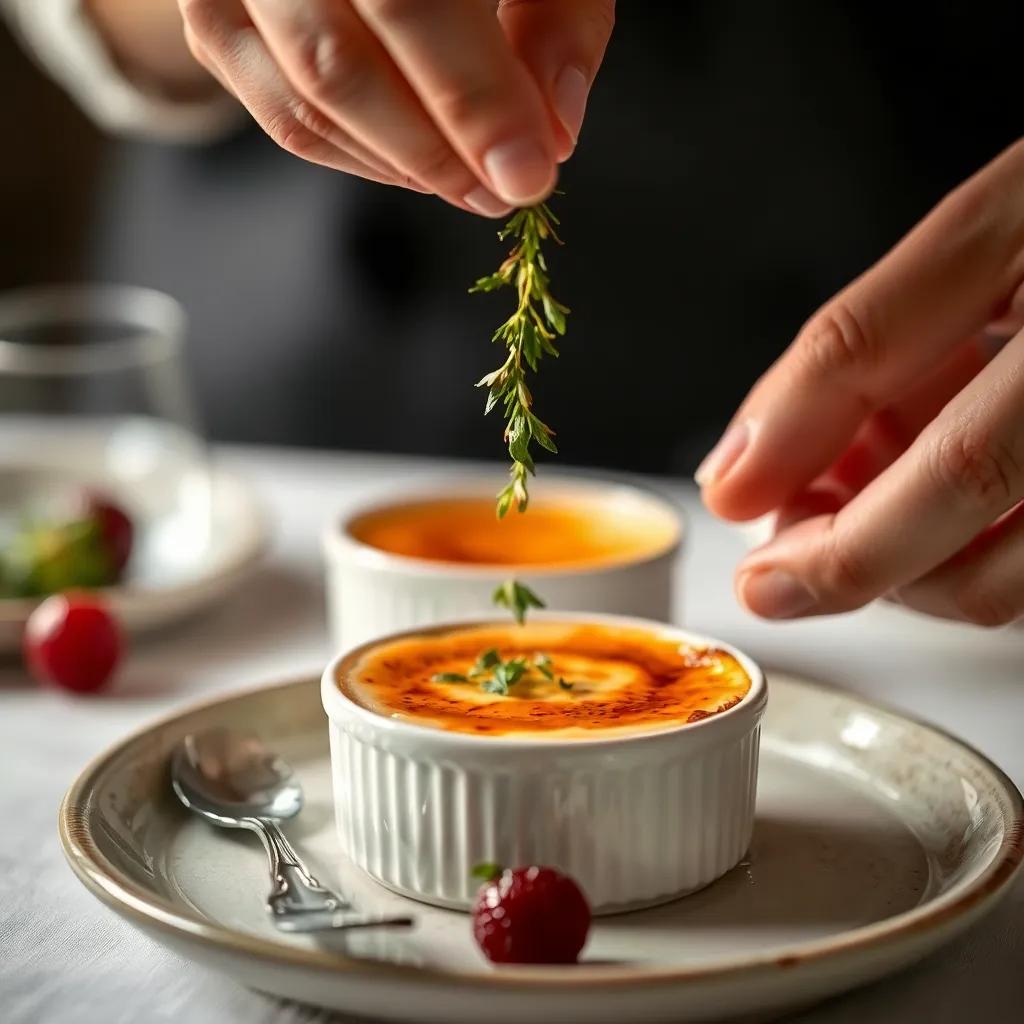
Leftovers & Storage
Crème brûlée is best enjoyed fresh, but if you happen to have leftovers—or want to prepare it ahead—knowing how to store and preserve this delicate dessert will ensure every spoonful stays luscious and satisfying.
Once your crème brûlée has been baked, cooled to room temperature, and chilled (ideally overnight), it’s important to keep it refrigerated. Store the custards in their original ramekins or carefully transfer them into airtight containers. Glass or ceramic ramekins with lids work beautifully, but if you don’t have lids, tightly cover each with plastic wrap or aluminum foil to protect against fridge odors and moisture loss. This also helps maintain the custard’s creamy texture and prevents a skin from forming on the surface.
In the refrigerator, crème brûlée will remain fresh and safe to eat for up to 3 days. Beyond that window, the custard may begin to lose its silky smoothness and develop off-flavors, so it’s best enjoyed within this timeframe for optimal taste and texture.
Because the signature crackly caramel topping is best caramelized just before serving, avoid caramelizing the sugar if you’re storing leftovers. Instead, keep the custards uncaramelized and torch or broil the sugar right before serving. This approach preserves the contrast between the creamy base and crisp topping, maintaining that irresistible texture and flavor you worked hard to achieve.
Freezing crème brûlée is not generally recommended, as the custard’s delicate texture can suffer—ice crystals may form, causing it to become grainy or watery upon thawing. However, if you must freeze leftovers, do so before caramelizing the sugar, placing the ramekins in a freezer-safe container or wrapping them tightly in plastic wrap and foil. Thaw frozen custards slowly in the refrigerator for several hours or overnight. Before serving, re-caramelize the sugar with a torch to restore the signature crunchy crust. Keep in mind that texture after freezing may not be as pristine as fresh.
For meal prep or entertaining, one of crème brûlée’s greatest advantages is how well it lends itself to advance preparation. You can fully assemble and bake the custard up to two days before your event—simply cool and refrigerate it. Then, right before your guests arrive, sprinkle sugar on top and torch it for that irresistibly crisp finish. This saves you precious time and lets you enjoy the occasion stress-free.
If you’re packing crème brûlée for picnics or transport, make sure the custards are kept chilled until shortly before serving. Use a cooler with ice packs to maintain a safe temperature, and bring along a portable kitchen torch or arrange to caramelize the sugar on-site if possible. Because the caramelized top softens quickly at room temperature, caramelizing as late as possible maximizes enjoyment.
In summary:
– Store cooled and uncaramelized custards covered in airtight containers or ramekins in the fridge for up to 3 days.
– Caramelize sugar right before serving to retain the classic crackle and contrast.
– Avoid freezing for best texture; if freezing, do so prior to caramelizing and re-caramelize after thawing.
– Prepare entirely ahead except for caramelizing, making crème brûlée a perfect make-ahead dessert.
– Keep chilled during transport and caramelize just before eating for maximum freshness.
With these storage tips, your exquisitely creamy and crisp crème brûlée will stay as enchanting on the second spoonful as it did the first.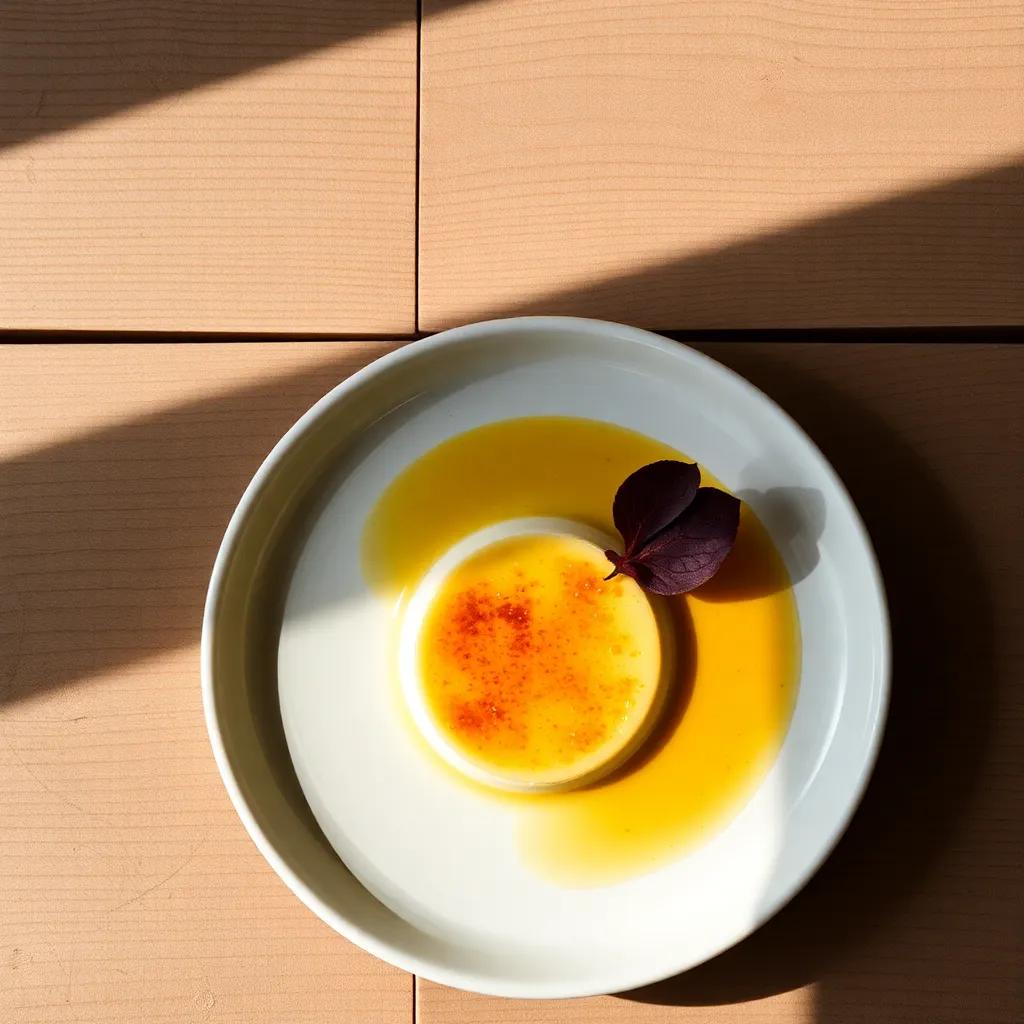
Behind the Recipe
Crème brûlée carries with it a rich history that embodies both refinement and simplicity—a hallmark of French culinary tradition. Originating in the late 17th century, it was initially a dessert enjoyed by aristocrats who sought the perfect marriage of rich custard and caramelized sugar crackle. While the precise origin is debated—some attribute its creation to French chefs, others to English or Spanish predecessors like “Trinity Cream”—what remains undisputed is its place as a timeless symbol of indulgence and craftsmanship.
The ritual of cracking through the brittle caramelized sugar to reveal the cool, velvety custard beneath has always lent the dessert an almost theatrical quality. This interplay of textures and temperatures makes crème brûlée not just a dish, but an experience. For many home cooks and professional chefs alike, mastering this delicate balance is a rewarding rite of passage, one that connects us to centuries of gastronomic heritage.
On a personal note, this recipe is inspired by countless evenings spent perfecting that golden crust and custard smoothness—moments shared with family and friends, where dessert wasn’t just an afterthought but the star of the night. The simplicity of just a few ingredients transformed by technique into something spectacular encapsulates why crème brûlée endures as a beloved classic. Whether served at festive celebrations or quiet dinners, it invites us to slow down, savor, and appreciate the art of fine dessert making.
FAQ
Can I make Crème Brûlée ahead of time?
What can I use if I don’t have heavy cream?
How do I prevent the custard from curdling?
Can I freeze Crème Brûlée?
Is there a dairy-free version of Crème Brûlée?
What’s the best way to get that perfect crack on top?
Can I add flavors or toppings to customize my Crème Brûlée?
Enjoy Your Meal!
There’s something truly timeless about the smooth, creamy custard beneath that perfectly caramelized sugar crust—making this classic crème brûlée recipe a delightful dessert to master in your own kitchen. With just a few simple ingredients and a little patience, you’ll create an irresistible treat that’s sure to impress family and friends alike.
Ready to give it a try? We’d love to hear how your crème brûlée turns out! Feel free to leave a comment, rate the recipe, or share your own delicious twists. Happy caramelizing!

